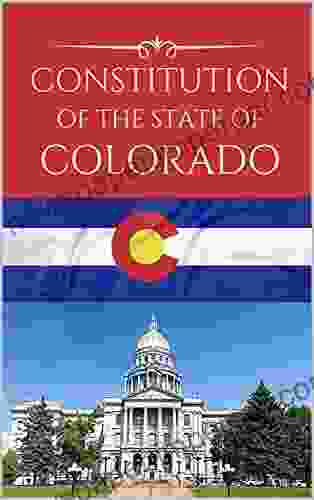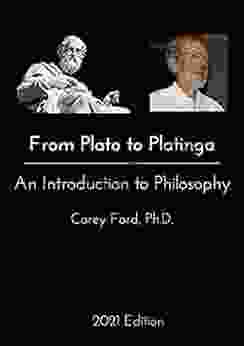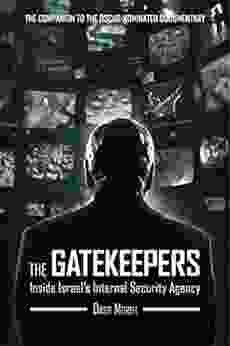Unveiling the Truth Behind the Controversial Education Law: A Journey Through Its History, Purpose, and Impact

Education, the cornerstone of civilized society, has sparked countless debates and controversies over the centuries. In the United States, one law stands at the forefront of these disputes: the No Child Left Behind Act (NCLB). Enacted in 2002 under President George W. Bush, NCLB has been both praised and condemned, its legacy still fiercely contested today. This comprehensive article delves into the history, purpose, and impact of NCLB, examining its complex nature and exploring the arguments for and against its continued existence.
Historical Context: The Birth of No Child Left Behind
The roots of NCLB can be traced back to the 1994 reauthorization of the Elementary and Secondary Education Act (ESEA),known as the Improving America's Schools Act. This legislation introduced statewide testing and accountability measures, aiming to close the achievement gap between different student groups. However, these measures were largely voluntary, and progress remained slow.
5 out of 5
| Language | : | English |
| File size | : | 1073 KB |
| Text-to-Speech | : | Enabled |
| Enhanced typesetting | : | Enabled |
| Word Wise | : | Enabled |
| Print length | : | 98 pages |
| Lending | : | Enabled |
| Screen Reader | : | Supported |
In the wake of the 2000 presidential election, the Bush administration vowed to reform education. NCLB emerged as the centerpiece of this agenda, building upon the principles of ESEA while introducing stricter mandates and consequences. The law's primary goal was to ensure that "all children have access to a high-quality education that enables them to reach their full potential."
The Pillars of No Child Left Behind: Accountability and Testing
Accountability and standardized testing lie at the heart of NCLB. The law requires states to develop academic content standards in core subjects (e.g., reading, math) and to assess student progress annually. Schools that fail to meet Adequate Yearly Progress (AYP) targets—defined as 100% of students meeting proficiency by 2014—face sanctions, including a mandatory restructuring plan and the possibility of being taken over by the state.
This emphasis on data-driven accountability was intended to pinpoint struggling schools and provide targeted support. However, it also raised concerns about the potential narrowing of curriculum, the over-reliance on test scores, and the narrowing of the focus on students who were struggling
Controversies and Criticisms: A Complex Legacy
NCLB has been a polarizing law since its inception. Critics argue that it has:
- Exacerbated the Achievement Gap: By focusing solely on standardized test scores, NCLB has diverted attention from the underlying socioeconomic factors that contribute to educational disparities.
- Narrowed Curriculum: To meet AYP targets, some schools have narrowed their curriculum, reducing exposure to arts, social studies, and other subjects deemed less essential.
- Increased Teacher Stress: The constant pressure to meet AYP has created a stressful environment for teachers, leading to burnout and high turnover rates.
- Unintended Consequences: Sanctions for failing schools have often punished low-income and minority students disproportionately, neglecting the need for systemic solutions.
Defenders of NCLB: Standing By Its Principles
Despite the criticisms, NCLB also has its defenders. Proponents argue that it:
- Increased Accountability: The law has held schools and districts accountable for student performance, creating a culture of continuous improvement.
- Improved Data Collection: NCLB has provided a wealth of data on student achievement, allowing for more informed decision-making.
- Raised Standards: The law has raised academic expectations for all students, driving progress towards universal proficiency.
- Empowered Parents: NCLB requires schools to provide parents with information about their child's progress and the school's performance, empowering them to make informed choices.
Recent Developments and the Future of Education Reform
NCLB has undergone several revisions since its initial enactment, most notably the Every Student Succeeds Act (ESSA) in 2015. ESSA maintained the law's focus on accountability but granted states more flexibility in setting AYP targets and developing test-based interventions.
The future of education reform remains uncertain. Some advocates call for a complete overhaul of NCLB, while others believe it should be refined and strengthened. The debate over the best approach to improving American education will likely continue, with NCLB's legacy serving as a constant reference point.
The No Child Left Behind Act stands as a pivotal moment in the history of American education. Its ambitious goal of ensuring high-quality education for all students sparked a complex and ongoing debate about the role of accountability, testing, and standards. While NCLB has undoubtedly had a significant impact, its controversial legacy remains a testament to the challenges and complexities of education reform. As the future of NCLB and the broader education landscape unfolds, it is essential to engage in thoughtful dialogue and consider the diverse perspectives on this complex issue.
5 out of 5
| Language | : | English |
| File size | : | 1073 KB |
| Text-to-Speech | : | Enabled |
| Enhanced typesetting | : | Enabled |
| Word Wise | : | Enabled |
| Print length | : | 98 pages |
| Lending | : | Enabled |
| Screen Reader | : | Supported |
Do you want to contribute by writing guest posts on this blog?
Please contact us and send us a resume of previous articles that you have written.
 Book
Book Novel
Novel Page
Page Chapter
Chapter Text
Text Story
Story Genre
Genre Reader
Reader Library
Library Paperback
Paperback E-book
E-book Magazine
Magazine Newspaper
Newspaper Paragraph
Paragraph Sentence
Sentence Bookmark
Bookmark Shelf
Shelf Glossary
Glossary Bibliography
Bibliography Foreword
Foreword Preface
Preface Synopsis
Synopsis Annotation
Annotation Footnote
Footnote Manuscript
Manuscript Scroll
Scroll Codex
Codex Tome
Tome Bestseller
Bestseller Classics
Classics Library card
Library card Narrative
Narrative Biography
Biography Autobiography
Autobiography Memoir
Memoir Reference
Reference Encyclopedia
Encyclopedia John M Spores
John M Spores Jonathan Shapiro
Jonathan Shapiro Jordan Cooper
Jordan Cooper Jonny Cassidy
Jonny Cassidy John Faaborg
John Faaborg Joseph Heller
Joseph Heller John D Wehr
John D Wehr John Clarence
John Clarence John Quintrell
John Quintrell John Russell Young
John Russell Young Joseph L Clarke
Joseph L Clarke Jomo London
Jomo London John Thompson
John Thompson John R Percy
John R Percy Jordan Vause
Jordan Vause John Harriyott
John Harriyott John C Rigdon
John C Rigdon Joseph C Hermanowicz
Joseph C Hermanowicz John H Gill
John H Gill John S Oakland
John S Oakland
Light bulbAdvertise smarter! Our strategic ad space ensures maximum exposure. Reserve your spot today!
 Oscar BellFollow ·7.5k
Oscar BellFollow ·7.5k F. Scott FitzgeraldFollow ·4.5k
F. Scott FitzgeraldFollow ·4.5k Forrest BlairFollow ·17k
Forrest BlairFollow ·17k Branson CarterFollow ·4.6k
Branson CarterFollow ·4.6k Banana YoshimotoFollow ·6.1k
Banana YoshimotoFollow ·6.1k Aleksandr PushkinFollow ·10.5k
Aleksandr PushkinFollow ·10.5k David Foster WallaceFollow ·5.9k
David Foster WallaceFollow ·5.9k Warren BellFollow ·7.8k
Warren BellFollow ·7.8k

 Jake Powell
Jake PowellThe Constitution of the State of Colorado: A Legacy of...
Since its adoption in 1876, the...

 Devin Ross
Devin RossFrom Plato to Plantinga: A Journey Through the History of...
Philosophy is the study of...

 Robin Powell
Robin PowellWords That Hurt, Words That Heal: The Power of Language...
Words are powerful. They can...

 T.S. Eliot
T.S. EliotTantalize Your Taste Buds with Over 90 Low-Carb Ethnic...
Indulge in a Culinary Adventure with "Over...
5 out of 5
| Language | : | English |
| File size | : | 1073 KB |
| Text-to-Speech | : | Enabled |
| Enhanced typesetting | : | Enabled |
| Word Wise | : | Enabled |
| Print length | : | 98 pages |
| Lending | : | Enabled |
| Screen Reader | : | Supported |
















